Neichute Doulo: the Naga man encouraging 7K youth to take up entrepreneurship
Neichute, who runs a social enterprise, Entrepreneurs Associates (EA), is encouraging the youth to look beyond government jobs.

India’s Northeastern region has long been a conflict zone, with the Seven Sisters remaining largely isolated from the rest of the country. However, Niechute Doulo, a 43-year-old from Nagaland, is determined to bring about a change and positively impact the lives of youngsters.
Neichute established EA in Kohima in 2000 to teach the youth about entrepreneurship and provide microfinance to help them kick-start their micro enterprises by raising capital through crowdfunding or citizens’ investment as no bank would provide finance to these young Naga men.
The needs of entrepreneurs in the Northeast
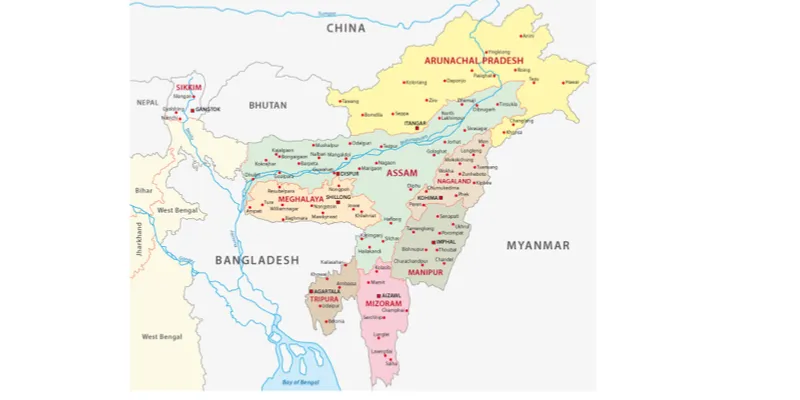
To comprehend the needs of entrepreneurs from the Northeast, it is important to look back in time and Neichute highlights the isolation of the region.
“For too long, the Northeast region (NER) of India has been wrongly projected and before 1962, it was isolated as a museum piece for tribal and indigenous people, too far from Delhi. Hence, the first five-year plans which began in 1951 did not take off here.
There was no Industrial Revolution, White Revolution, and Green Revolution. Suddenly, in 1962, when China attacked India, the government woke up to the vulnerability and strategic security concerns. So, abruptly, the government saw NER from the lens of security concerns and started building roads where there was no inhabitation and no roads where there was inhabitation. This continued fervently for nearly two decades. By the late 1970s, the government began to see NER from the lens of development, providing subsidies and jobs. Hence, multiple states were created in the late 1970s and early 1980s.”
Talking about the Armed Forces (Special Powers) Act (AFSPA), under which he has lived his whole life, he says, “It’s a daily affair. Many young people have also taken to drinks and drugs to escape the harsh realities of life when their loved ones become victims of the conflict.”
In such a situation, he asserts,
“The government’s most popular response was more easy money pumped in and government jobs being created. But the problem cannot be tackled by doing this. It is a short-lived idea in response to an armed conflict which started during the British era and became more violent after India’s independence.
This led to a culture of dependency on government subsidies and jobs where the government became the only employer as there was an absence of industry in Nagaland.”
In the 1990s, it was very easy to secure a government job. In such a scenario, the youth of the time didn’t even consider options like self-employment and entrepreneurship.
Saturation and societal attitude
The saturation in government jobs only began in the early 2000s. Neichute highlights, “There was a need for the youth to change their attitude and take up entrepreneurship, or we would have been unable to create wealth and opportunities for our society.”

This was going to be particularly difficult to achieve at a time when everyone just wanted easy money.
At the other end of the spectrum, there was a need to change banks’ attitudes too. Neichute says,
“When we started out, people told us that Nagas were not bankable and couldn’t do business. Many said that business is meant for people like Marwaris.”
As of April 2017, the number of the unemployed educated in Nagaland (which has a population of two million) stood at 74,000. This is apart from the 1,45,000 employed in the government sector.
From professor to social entrepreneur
Having grown up in Thetsumi in Phek district, Neichute talks about the village culture. “I have fond childhood memories of my village which was the whole universe to me. In the early years in the village, I was equipped with skills like hunting, working in fields, and doing odd jobs around the house.”
At the age of 10, his father sent him to a boarding school run by the Jesuits, in the neighbouring Chizami New Town, giving him exposure to other Naga tribes. He pursued further studies from Patkai Christian College in Dimapur, 110 km from his village. His experience there left many deep impressions on him as he explains, “The college gave me a lot of scope to experiment with initiatives that I spearheaded with convictions to better my world. In 1992, I organised a group to demonstrate dignity of labour among the youth by starting a group called Beacon of Hope. In order to set the right example, I cleaned the college toilets and raised funds to build a library in my village as well as the college.”
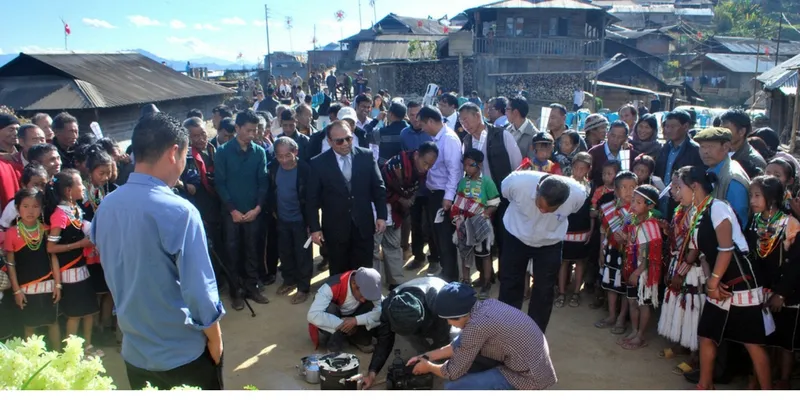
After his graduation, he pursued a postgraduate degree in economics from North Eastern Hill University, Shillong, Meghalaya. Finishing his studies, he taught economics at a reputed college for two years.
In 1996, along with a friend, Watson Mero, he organised open street sales to encourage self-reliance and doing micro businesses. In 1998, he organised Reach Home Service where they sold things door to door. He also started a small shop in Kohima although with teaching in a college. During this time, he found out that as tribal, exposure to the market economy was a culture shock.
“When my small shop was gutted out in a fire accident in December 1999, I had to borrow money at four percent per month and five percent per month which was compounded every four months to pay to business houses from whom I took credit for the goods. In less than a year, I had to repay interests more than the capital. I knocked on bank doors, where I received only cold and rude responses. This kept me wondering if a person like me, a college lecturer drawing salary through the bank, couldn’t get even Rs 50,000 on loan, how could an unemployed youth ever access bank loans? So the wishful thinking of launching a microfinance venture began to take root.”
The paradigm shift
This ushered him into building EA to provide entrepreneurs with a platform to take the society forward on the back of their own successes. The aim was to help the youth realise their dreams and train unemployed youth in taking up entrepreneurship
With volunteers as well as paid staff, EA started as a non-profit organisation and plans to remain so. To sustain in the long run, there was a need to take up profit-oriented activities, which was why EA developed as a cooperative organisation for its microfinance activities and also an NBFC under Reserve Bank of India for its SME finances.
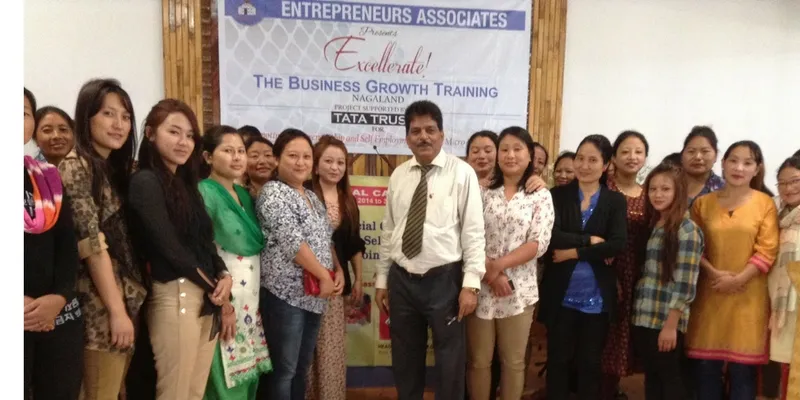
Under the combined hybrid model of its non-profit, financial, and social enterprises, EA has a total full-time paid staff of 75 people and 12 volunteers.
They serve over 1,500 SHGs reaching out to about 18,000 families, and 20 farmers’ clubs reaching out about 1,000 farmers. They also support over 7,000 unemployed youth for self-employment and entrepreneurship, generating meaningful employment for over 16,000 youth in both Nagaland and Manipur .
Proving the skeptics wrong
Today, EA has thousands of first-generation entrepreneurs successfully doing business and generating jobs. EA also has its own finance company and has successfully partnered with banks for crores of credit with 100 percent recovery. Moreover, the government, taking notice of how EA has generated livelihood, has partnered with the organisation to launch over 7,000 first-generation entrepreneurs in the Northeastern region, particularly in Manipur and Nagaland.
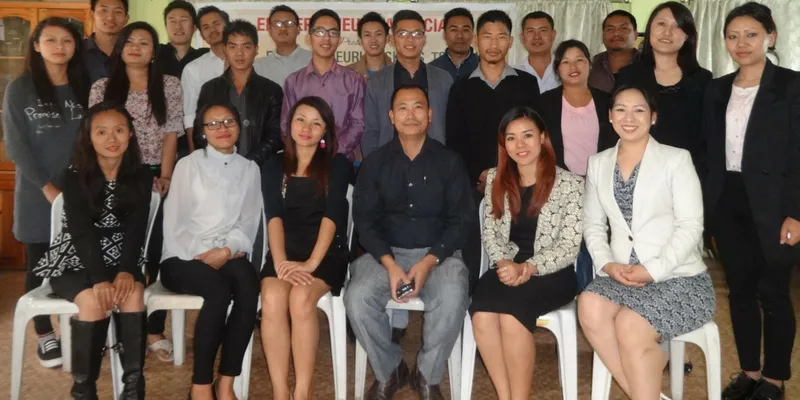
EA tries to provide a new perspective to NER by developing a strong breed of local entrepreneurs. Neichute asserts, “EA’s work of promoting entrepreneurship in NER is critical for NER’s development. We have seen the government-driven development in the region since the 1970s. For the next 50 years to come, we must see the NER driven by the entrepreneurial spirit. We need to develop tens of thousands of first-generation entrepreneurs in NER. Such an ambition will make ACT EAST POLICY possible in the next 15 years.”
Another milestone achievement in the path of making entrepreneurs was in 2016 when Neichute was awarded the Social Entrepreneur of the Year India by a joint initiative of Jubilant Bhartia Foundation and Schwab Foundation for Social Entrepreneurship (a sister organisation of the World Economic Forum).
There are many milestones which Neichute and his social enterprise have already achieved but there are many more to go.






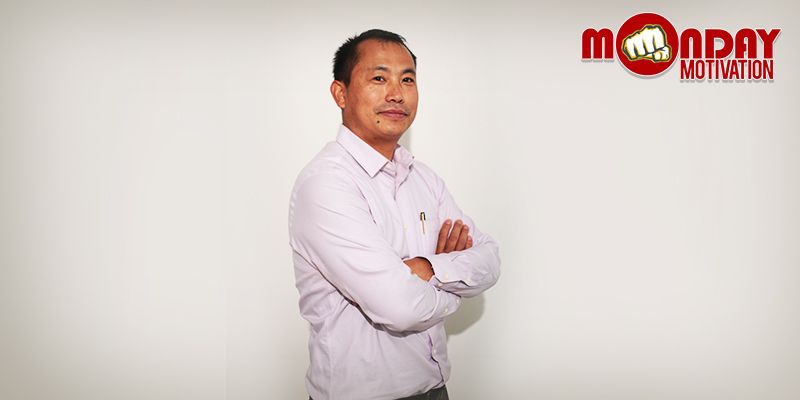


![[Funding alert] Contactless retail tech startup Gobbly raises $500K from Sauce.vc](https://images.yourstory.com/cs/2/b87effd06a6611e9ad333f8a4777438f/Imagefskc-1594011063679.jpg)

